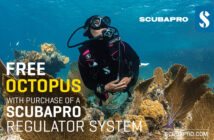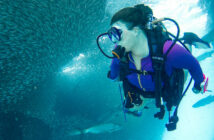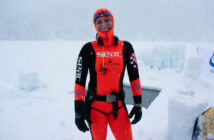Wetsuit Neoprene is a rubber foam used to make, well, a wetsuit. It is called closed-cell neoprene as the bubbles are trapped in the neoprene rubber foam and between one or more layers of fabric. Closed-cell means that each nitrogen bubble is surrounded and separated by neoprene. Both freediving and scuba suits are made of closed-cell neoprene.
The freediving neoprene (sometimes called open-cell) is a low or medium density neoprene meaning the bubbles are larger and the walls between the bubbles are thinner than in a scuba wetsuit. The result is the suit stretches more, is softer, and very comfortable but the larger bubbles compress easily with depth. There is no internal lining in a freediving wetsuit so the thinner neoprene clings to the body with no water layer between the skin and the suit. The suit is the insulation resulting in a warmer suit on the surface that is vulnerable to tearing and difficult to get into. Freedivers usually use lubrication such as soapy water to get into their wetsuits.
The scuba neoprene is normally a high density neoprene that is lined on both sides. The bubbles are smaller and the walls around the bubbles are thicker. These suits are less stretchy but they don’t compress as much with depth. Consequently the scuba suit gives better insulation at depth. The internal lining makes the suit easy to get on and off. This internal lining allows a thin layer of water to form between the skin and the suit. That warm water layer provides the diver insulation. Because the scuba suit is generally thicker, denser and internally lined it will generally more robust than the freediving suit.
In summary then, both suits can be used for either freediving where the majority of time is spent on the surface, or scuba where most time is spent at depth. That said, each suit is designed with a specific purpose in mind, low or medium density for freedivers and high density for scuba divers.








